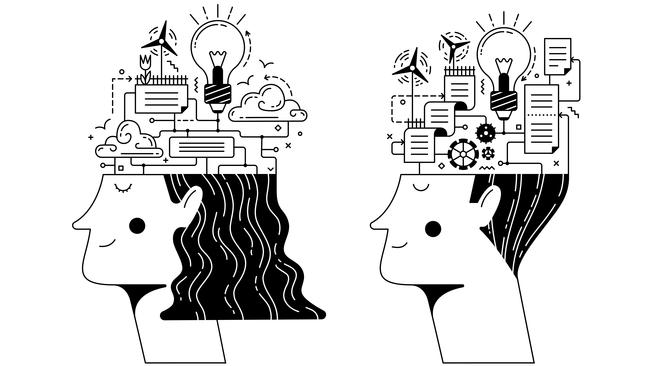Science shows that there’s no gender when it comes to brains
We need to keep challenging the stereotypes that women are always co-operative and empathetic

Journalists trade in stereotypes. We are trained to see patterns in behaviour, people and data and one of the most common patterns we see is gender. Mea culpa. This year one of the persistent themes has been how well women political leaders have performed in containing the pandemic. Statistically, that is largely true (albeit a small sample) but the truthiness of this belies a more nuanced reading.
Observers have been quick to note how women leaders with empathy, co-operation and inclusiveness have suited the times when we all need to co-operate, work on behalf of others and have empathy for fellow humans. And, frankly, it’s been too easy to show how selfish bully boys have failed to steer their countries through the crisis.
But while we were counting the costs of male and female leadership, new research on our gendered thinking was emerging into a debate that was becoming more like a culture war than a science. Just ask JK Rowling.
The most interesting contribution was made by the neuroscientist, Professor Gina Rippon in her book, The Gendered Brain, released in February. Rippon looked at research on the brains of men and women that has been done over years and couldn’t find meaningful differences. Whether measuring maths skills, empathy, fine motor control, leadership qualities or listening skills, the differences were scant.
As Rippon told a Sydney conference in March, when we ask about gender differences: “We’re either looking in the wrong place or asking the wrong question.” She added that the place to look for these differences isn’t in the brain but in society.
The idea that differences in thinking belong more to society than biology arises from the fact that humans are wired to be social so that, from a very early age, we are looking for ways to fit in. Girls get instructions about their place in the world when they’re told trucks are for boys or engineering is a male domain or leadership isn’t the sort of role for a woman, especially one who wants a partner or children. In short, they begin developing the sort of brain that society deems fit for them.
Rippon’s research fits neatly with the expanding field of neuroplasticity that has shown how malleable the brain is throughout life. The basic tenet is that what you practise in life is what your brain becomes and what you don’t practise is lost. She goes a step further when she says the brain is also permeable — that is, it becomes what society bathes it with.
Rippon quotes an experiment in which boys and girls (whose brain activity was being scanned) were shown videos of someone being hurt. When asked how the video affected them, more girls said they felt bad about it. But the brain activity of girls and boys showed no difference. Girls had obviously learnt to give the right response, even if they didn’t feel it.
Rippon, who denies she is a sex difference denier, does a neat job of demolishing the different ways scientists have searched for an explained gender difference in brains. From the early days of deciding that a big brain was obviously a superior one to more recent findings on the complementary brain. This so called “complementarity trap” refers to the idea that female brains are not deficient but different — and the difference is often lauded as a handy foil for men’s proclivities. A bit of Adam’s rib thinking.
Another challenge to stereotypical thinking was made during the year by Professor Catherine Dulac of Harvard University, when she won one of the 2021 Breakthrough Prizes in Life Sciences for her work on parenting behaviour.
Her studies on mice found that parts of the brain, which govern activities thought to be specific to males or females, are present in both sexes and those sex-specific behaviours can be influenced by outside forces, such as pheromones. Ergo, male mice can mother or, as Dulac put it, “the idea of the gendered brain is way more complex than anticipated”.
Given how fraught the gender debate has become — we haven’t even mentioned the other forms of gender — most management experts have learnt to refer to qualities of managers without mentioning whether they wear ties or necklaces. And, indeed, qualities that were once associated with women are now the hot traits for modern business.
Moreover, there’s a danger in labelling even helpful traits as particularly female qualities. Take our quick survey on how women leaders have performed during the pandemic. Do we want to preserve the idea that only women have these traits of empathy and co-operation? Does that mean that women will only perform well when the times call for those qualities and will be ignored when the times change? That sounds awfully like relegating women leaders to the HR department of the world.


